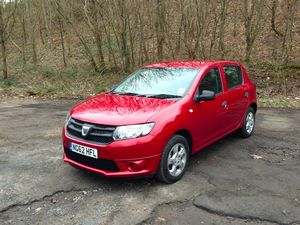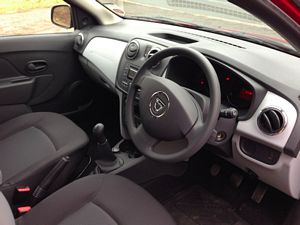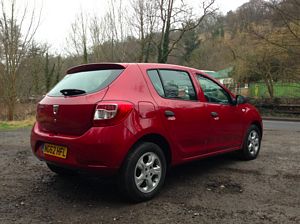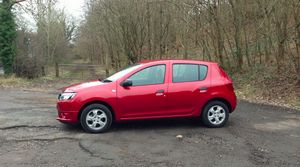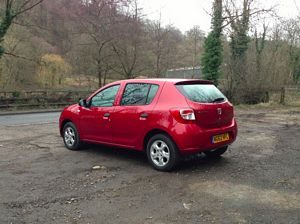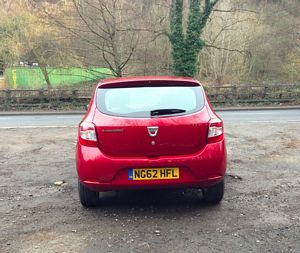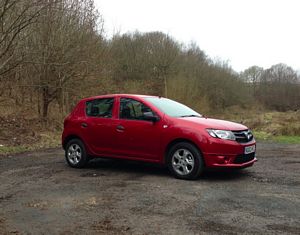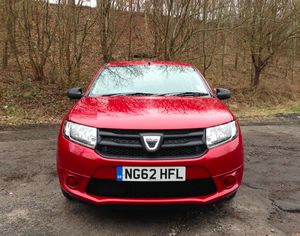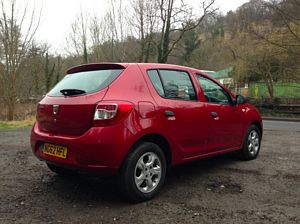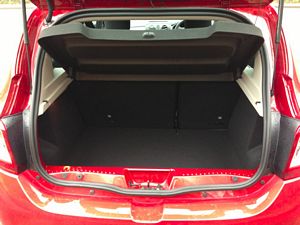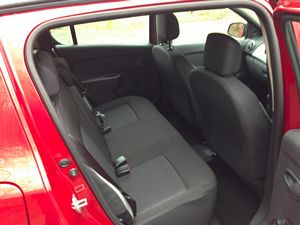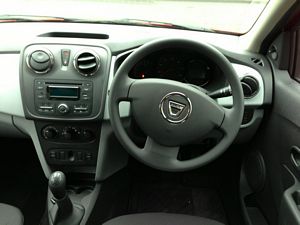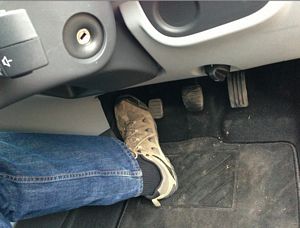|
By accessing or using The Crittenden Automotive Library™/CarsAndRacingStuff.com, you signify your agreement with the Terms of Use on our Legal Information page. Our Privacy Policy is also available there. |

Dacia Sandero review
|
|---|
|
|
Dacia Sandero review
Matt Hubbard
Speedmonkey
March 15, 2013
Matt Hubbard reviews the new Dacia Sandero, and finds you get a decent car for not a lot of money
It wasn't even on the market at the time but in 2012 Dacia took 4300 pre-orders for their new Sandero and Duster models. All Dacia had done was make the market aware of it's presence via motoring journalists and bloggers, and the buzz did the rest.
A brand new car. Dirt cheap. Made by Renault. OK, what's the catch?
Aside from the fact it is pov spec there isn't one. Really pov spec. The £5995 base model Sandero doesn't even have a radio. You have to wind the windows up BY HAND. I should imagine some people have plain forgotten how to do that and just stare at the strange thing on the door with a look of puzzlement on their orange tanned faces.
That's the point of Dacia. Everything is basic, everything is cheap, every option you might want is cheap too. They're made in China and Romania in the same factories as Nissans and Renaults. They're transported to the UK on the same boats and brought from docks to dealers on the same lorries.
The switchgear is from previous model Renaults. The most anyone in the UK has ever paid for a brand new Dacia is £17,800. That was a top spec Duster with 4WD, every option ticked and a 7 year warranty bought as an optional extra (standard is 4 years). The men and women of Dacia thought that was great. They buzz with enthusiasm when they talk about their range. They struggle to hide the smiles on their faces as they talk about their cars and how hilariously cheap they are.
If you think that the press get to drive fully specced cars you'd be right. The base model costs £5995, the one I drove, a Sandero Ambiance dCi 90, costs a mighty £8395 - and with almost all options included, £9290. The Skoda Fabia range starts at £9880.
In the metal first impressions are that the Sandero is quite a looker. The deep red paint works well and isn't just one coat deep. The body coloured bumpers and spoiler are a step up from the bare plastic items on the base model. The car itself, the overall shape of the thing, works well. Indeed the front end is much more handsome than the gawping mouth possessed by the latest Fords.
And it's big. It's commodious. 3 adults could sit quite easily in the back seats, although even on this model they'd have to wind the windows down by hand (First World Problems, eh?) The boot is bigger than a Golf's boot. It's a spacious car.
There's no skirting round the fact that the interior is dead basic. Plastic everything, with the odd chrome highlight to alleviate some of the sheer plasticness. But it's never a nasty, thin, Airfix model type plastic you see on some Japanese cars. It's tactile enough. Doesn't sound hollow.
The switchgear is good. It should be as it's been filched from the previous generation Clio. You could imagine spending time in the Sandero and not really giving a damn about it's cheapness. The budget has been spent well.
Two things about the interior annoy. One is that the seats are flat as a pancake. Hardly any lumbar or thigh support at all. Surely it wouldn't cost much, if anything, to reshape the frame with a little curve to accommodate the human body. The other is that the space between the clutch and central bulkhead is less than the size of a human foot (see photo). Again, it wouldn't have cost much to design the problem out.
The Sandero has a key, which is quite unusual for Renault. Most have silly remote cards and a button to stop and start. Turn the key and the engine starts just like cars used to do before Start buttons were invented. The Sandero I drove had the 1.5 litre diesel, known as the dCi 90. It has 90bhp as you might have guessed. Not much, but this model weighs 1033kg. It does 0-62mph in 12.1 seconds and returns 74mpg.
On the road and the most impressive feature is the drivetrain. Engine and gearbox are the very latest Renault units and they work well. The 5 speed manual 'box snicks into gear nicely and the engine is adequate enough to keep things buzzing along nicely.
Get a bit lairy through the corners and the softness of both the suspension and the seat means you'll be getting intimate with your passenger sooner than you might have anticipated. English roads might be poor but Romanian roads are far worse. It seems to have been set up for Romanian roads and is much too soft. The flatness of the seat means that when the body rolls you roll too.
But, to complain any more is to nitpick. Dacia have hit upon an idea that other manufacturers have previously dismissed as unworkable. The British like their cars well specced, refined and expensive, right? Not necessarily.
The Sandero will sell well. The price is right, the product is good. Their target market is not the Kias, Hondas and Chevrolets of this world, it is the secondhand market. They expect the warranty, the residuals (best in class depreciation), the finance packages, the fact you get a brand new car to attract buyers who would normally consider a used car.
They also think it'll be attractive to people in rural areas, and they're right. Farmers, vets, horsey types whose cars take a battering down narrow, potholed, muddy lanes will love the Sandero and Duster. It's no featherweight in the construction stakes. It feels well put together. The Sandero will take a battering, and when parts fail or fall off they'll be cheap to replace.
The Dacia Sandero is a sound business proposition, for Dacia itself and for the recession hit, cash strapped buyer.
The car I drove was the Dacia Sandero Ambiance dCi 90. Specifications:
Price - £8395 (£9290 as tested)
Engine - 1.5 litre diesel
Transmission - 5 speed manual, FWD
Power - 90bhp
Torque - 162lb ft
Weight - 1033kg
0-62mph - 12.1 seconds
Top speed - 107mph
Fuel consumption - 74mpg combined
CO2 - 99 g/km

















